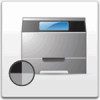Lexmark Monochrome Laser Complete Printer Reference (1.7 MB) - Page 186
Support for in-bound fax, Serial interface adapter
 |
View all Lexmark Monochrome Laser manuals
Add to My Manuals
Save this manual to your list of manuals |
Page 186 highlights
Support for in-bound fax If you attach a Class 1 fax modem to the serial port on the tri-port card or MarkNet Pro 3 print server, you can use the serial port to receive faxes. Most Class 1 brands are acceptable. An incoming fax is received on the serial port and routed to the printer, where it is printed. If someone tries to send a fax while the printer is busy, the phone rings but is not answered. The sender should wait and then try again. Outgoing faxes are not currently supported. Note: In-bound fax is not supported through the serial interface adapter. See the following section for more information about this device. Serial interface adapter This adapter attaches to the parallel port of the printer. You set baud, parity, and so on using physical switches on the adapter; no configuration is done through the printer menus. The printer is effectively unaware of the adapter, which provides an RS-232C 25-pin D-shell female connector for serial cable attachment. The serial interface adapter is supported in the following configurations: • 9600 baud, no parity, 8 data bits, and 1 stop bit • 19,200 baud, no parity, 8 data bits, and 1 stop bit This adapter may be most useful where the printer needs to be attached both serially and via a network, such as Token-Ring or Ethernet. Note: The serial adapter provides only unidirectional support. It has no NPA support. Connectivity and network management 186















